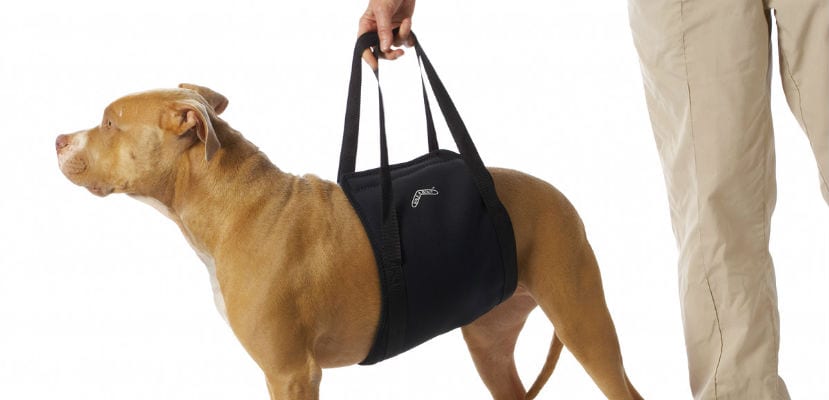
Also called hip dysplasia, hip dysplasia it is an osteoarticular disease caused by a poor congruence between the acetabular cavity and the head of the femur. This causes problems such as pain, lameness and inflammation, making it difficult for the dog's hind legs to move. It develops during adulthood and is more common in large breeds.
Although any dog can suffer from this disorder, the truth is that there are some factors that can lead to its appearance. An example is obesity, because excess weight is really harmful to the dog's joints. It is also an insufficient diet, since it must be high in minerals and nutrients to keep the animal's bones strong.
Excess or lack of physical exercise are also two very influential issues in the development of this disease. However, the genetic predisposition it's the most important factor. Although the genes related to hip dysplasia, experts assure that it is a polygenic disease, caused by two or more different genes.
If we notice that our dog feels discomfort in this area, we will have to go to the vet to determine if there really is dysplasia. If so, a medical treatment which will depend, in turn, on the state of the disease. It usually includes the administration of pain relievers, anti-inflammatories and condoprotectors (they protect cartilage). Such treatment does not end hip dysplasia, but it alleviates its symptoms and slows its development.
In some cases a surgical intervention, which can be performed in different ways: amputation of the femoral head, triple hip osteotomy, excision of the pectineus muscle, etc. The efficiency of these forms of surgery depends on the circumstances of each case.
In addition to this type of treatment, a dog with hip dysplasia needs some specific care. Physiotherapy and massages, for example, can be of great help to reduce pain in the area. It is also important that we use thermal blankets to protect the joint from the cold and that we offer our dog a soft and easily accessible place where he can rest.
Sessions hydrotherapy They are highly recommended, so it is advisable to go to a professional to teach us this technique. In addition, we will have to maintain an adequate weight, because obesity is really harmful in these cases. On the other hand, it is recommended to reduce the time of the walks even if we increase their number; they must add up to at least a total of 30 minutes.
Likewise, there are special accessories for dogs suffering from this disorder, such as hip supports or specific harnesses for the hind legs. This is the best way to help the animal walk without injuring itself and to stimulate it to move. Finally, periodic veterinary check-ups are essential.
Thank you for having found some ways to treat hip dyspepsia for dogs. In the case of my 14 year old adult Rottwailer, he has suffered from hip dyspepsia for a month and he has been walking for two weeks, what can I do?